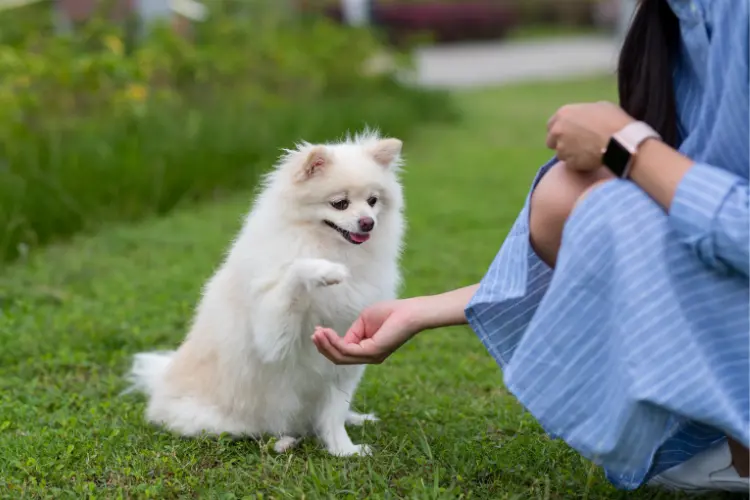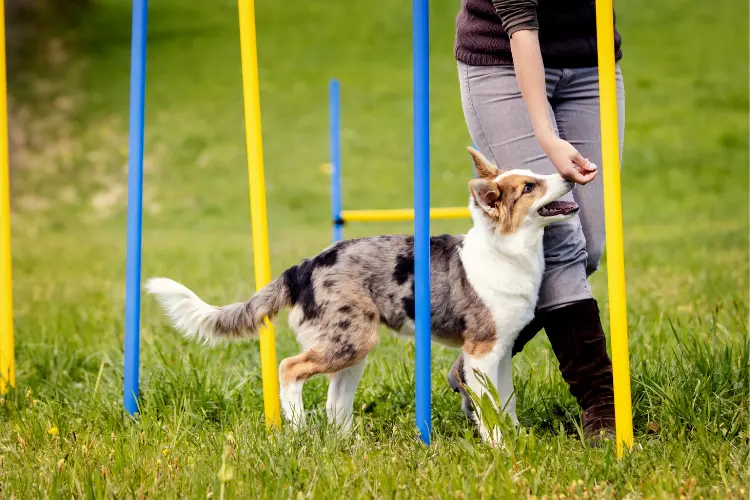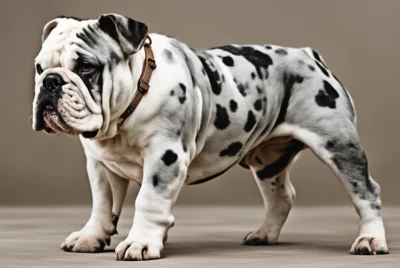Puppy Training Timeline: When to Start Training a Puppy
Are you a new puppy owner eager to embark on the journey of training your furry friend? I understand that the world of puppy training can be both exciting and overwhelming. One common pain point that many pet owners face is knowing the optimal timeline for when to start training a puppy.
It can be difficult to determine the right age to begin training and what skills should be prioritized at different stages of their development. This lack of clarity can lead to frustration and inconsistency, potentially hindering your puppy’s progress.
Fortunately, understanding the appropriate puppy training timeline can help you establish a solid foundation for their learning and ensure a lifetime of good behavior. Let’s explore the key milestones and stages in a puppy’s development and discover when to start training to maximize their potential.
Tips for Ensuring Your Pup’s Training Sessions Are Enjoyable
Before knowing when to start training a puppy, it is essential to ensure the process is smooth and effective, so here are some basic puppy training tips to help you achieve this.
1. Keep Training Sessions Short
Puppies have limited attention spans, so it’s essential to keep training sessions brief and focused. Aim for multiple short sessions throughout the day rather than one long session.
Ideally, each training session should last no more than 10-15 minutes, allowing your pup to stay engaged and prevent them from becoming overwhelmed or bored.

2. Use Positive Reinforcement
Positive reinforcement is an effective puppy or dog training technique that rewards your puppy for exhibiting desired behaviors. This method relies on praise, treats, or toys as rewards, reinforcing that good behavior leads to positive outcomes.
By associating short training sessions with positive experiences, your puppy will be motivated to repeat desired behaviors and learn quickly.
3. Use Consistency When Training Your Puppy
Consistency is key to successful puppy training. Make sure that everyone in your household follows the same training methods and uses consistent commands or even puppy basic cues.
This approach prevents confusion and helps your pup understand what is expected of them.
Consistency also applies to the timing of rewards and corrections, as immediate feedback strengthens the connection between behavior and consequence.
4. Practice in Different Environments
To prepare your puppy for real-life situations, it’s essential to practice training exercises in various environments.
Start training in a familiar and distraction-free area, gradually progressing to more challenging environments, such as parks or busy streets. Exposure to different settings helps your pup generalize their training and remain obedient.
5. Be Patient
Patience is a virtue when it comes to training puppies. Remember that young dogs are still learning and adapting to their surroundings. Avoid getting frustrated or resorting to punishment if your pup doesn’t grasp a concept immediately.
Instead, maintain a calm and positive attitude, focusing on rewarding small successes. Consistent patience fosters a trusting bond between you and your puppy, making training sessions more enjoyable.

Basic Timeline for Fundamental Puppy Training
7-8 Weeks Old: The Introduction to Basic Commands
So when to start training a puppy? When your puppy is about 7-8 weeks old, it’s an ideal time to introduce basic commands such as “Sit,” “Stay,” and “Come.” The puppy training process should be gentle and positive, associating commands with rewards.
- Command Reinforcement: Teaching a command to a puppy requires clarity and consistency. When you want your puppy to sit, for example, ensure you say the command in a clear, confident, and calm voice.
Repeat the word just once, as repetition can potentially confuse. If the puppy doesn’t understand or respond immediately, avoid repeating the command but rather try to guide them physically into the position you desire.
Remember that puppies, like young children, are still learning and processing information, so patience is critical. Repeatedly saying the command might make your puppy understand that they must hear it multiple times before responding, which isn’t the behavior you want to foster.
- Positive Reinforcement: One of the most highly effective training techniques for puppies involves using rewards, often treats. When teaching the “sit” command, a dog-friendly treat can be used as a lure. Hold the treat above the puppy’s head and move it backwards over their body. Their natural reaction will be to sit down.
Keep in mind, however, that the treat is a reward for the desired behavior, not a bribe. So, if your puppy struggles to sit, remain patient. Do not give them the treat until they act, but use it as a lure to guide them into the sitting position.
- Reward: Immediate reward and praise are fundamental aspects of training. As soon as your puppy sits, give them the treat and offer enthusiastic verbal praise. Dogs live in the moment, and they make connections between their actions and consequences quickly. So, the immediacy of the reward after the desired behavior helps your puppy understand what they did right.
In addition to treats, rewards can also include praise, petting, or a favorite game or toy. Just make sure it’s something your puppy genuinely loves and finds motivating. The key is to be consistent so your puppy understands that every time they obey the command, they get a reward.
Leash Training Indoors
Leash training is a crucial aspect of puppy training that aids in future outdoor walks, trips to the vet, and generally keeping your pup safe. Starting this training early is beneficial, but since puppies may not have received their full vaccinations, it’s safer to initiate this indoors.
Acclimation to the Leash:
- Begin by introducing your puppy to the collar or harness. Let them sniff and explore it first to ensure they’re not scared or confused by this new object.
- Once your puppy seems comfortable with the collar/harness, put it on them but do not attach the leash yet. Ensure it fits properly—not too loose that it could slip off, but not too tight that it’s uncomfortable or restricting.
- Allow your puppy to wear the collar/harness for short periods while providing them with treats, play, or other rewards. This way, they associate the collar/harness with positive experiences.
- Gradually increase the duration they wear the collar/harness. Over time, your puppy should become comfortable with it.
Indoor Leash Walks:
- After your puppy is comfortable with the collar/harness, similarly introduce the leash, allowing them to sniff and explore it before attaching.
- Attach the leash and let them wander under your supervision. Ensure the first experiences are positive—play, treats, and praise should be abundant in these early stages.
- Once your puppy is comfortable with the leash, start guided indoor walks. Make sure you’re in a quiet, familiar environment with minimal distractions. Use the “come” command and guide them towards you, rewarding them for following you.
- Practice indoor leash training consistently, keeping puppy training sessions short but regular and ensuring your puppy gets used to leash.
General Handling
Acclimatizing your puppy to being touched can reduce stress during vet visits or nail trimmings in the future.
- Introduce your puppy to gently touching sensitive areas like the ears and paws. Offer treats or verbal praise to create a positive association with these actions.
8-10 Weeks Old: Introduction to Crate Training
Introducing your puppy to a crate is an effective way of establishing a safe and calm environment for them. Crate training can also help with house training, as dogs naturally avoid soiling their personal space. Furthermore, it can prevent destructive behavior and ensure their safety when you can’t supervise them.
- Initially, have them spend 10-minute intervals in the crate while they are calm. Gradually increase this duration over time.
- Make the crate a rewarding experience by offering treats, meals, or favorite toys within the space.
Crate Familiarization:
- The first step is to choose a suitable crate for your puppy. It should be large enough for them to stand up, turn around, and lie down comfortably, but not so big that they could designate a separate area for elimination.
- Begin by letting your puppy explore the crate. Leave the door open and let them enter and exit freely. Remember to never force them inside the crate.
- Once your puppy is comfortable around the crate, encourage them to stay in it for short periods, about 10 minutes at a time. Do this when they are already calm or tired, like after playtime or a meal, making it easier for them to relax.
- Over time, slowly increase the duration your puppy spends in the crate. Always monitor them during this time to ensure they’re comfortable and not showing signs of distress.
Positive Association:
- Make the crate a rewarding experience by placing treats, meals, or favorite toys inside. This way, your puppy will associate the crate with positive things.
- Adding a soft blanket or bedding can also make the crate more comfortable and inviting.
- If possible, try feeding your puppy their meals in the crate. This can further reinforce a positive association with the crate.

10-12 Weeks Old: Curbing Bite Instincts
Puppies are often full of energy and curiosity, and their primary means of exploring their environment is through their mouths. While this is natural and normal behavior, it’s also crucial to teach them appropriate bite inhibition to ensure they do not cause harm as they grow and their jaws become stronger.
Bite Redirection:
- Recognize that when your puppy starts biting, it’s usually not a sign of aggression but rather a part of their explorative and playful nature. It’s also important to note that around 10-12 weeks old, puppies are teething, which might increase their desire to gnaw and chew on various objects, including your hands and ankles.
- Make sure your puppy has access to a range of suitable chew toys. Different textures can offer relief from teething discomfort and keep your puppy interested.
- If your puppy starts to bite at inappropriate objects, including you, calmly interrupt them and replace the inappropriate object with a chewable toy. This redirection helps teach your puppy what they are allowed to bite.
- When they switch from your hand to the toy, praise them and offer positive reinforcement. Consistent redirection can help your puppy understand what’s appropriate to bite and what isn’t.
12-16 Weeks Old: Potty Training
Around 12-16 weeks, your puppy begins to have more control over their bladder and bowel movements, making this an ideal time to start potty training.
The process will require patience and consistency, but with time, your puppy will learn where and when it’s appropriate to relieve themselves.
Regular Potty Breaks:
- Establish a consistent bathroom schedule for your puppy. Puppies typically need to go to the bathroom first thing in the morning, after each meal, after naps, and after play sessions.
- Keep an eye out for signs that your puppy needs to relieve themselves. These signs include sniffing, circling, whining, barking, or heading toward the door.
- During the night, you might need to wake up to take your puppy outside. Young puppies may not have the bladder capacity to last the entire night. Over time, they can hold it longer, and night-time trips will become less necessary.
Reward Successful Potty Trips:
- When your puppy goes to the bathroom in the correct place, give them praise and a small treat. This helps them associate going to the bathroom outside with positive reinforcement.
- Be consistent with your praise and rewards. The more consistent you are, the quicker your puppy will understand what behavior is being rewarded.
- Accidents will happen, especially in the early stages of potty training. If you catch your puppy in the act, make a quick, sharp noise to interrupt them, then immediately take them outside to finish. Never punish your puppy for accidents – this can lead to fear and confusion.
6 Months Old: Transitioning to Adolescence
By six months, puppies transition into adolescence. An increase in independence, curiosity, and energy marks this stage.
While these changes can make training more challenging, they also present new opportunities to strengthen learned behaviors and teach your dog to respond reliably in various situations.
Consistency in Training:
- It’s crucial to continue reinforcing the commands and behaviors your puppy has learned so far. As their environment changes, they may need reminders about appropriate behaviors. Consistent reinforcement will ensure that these behaviors become deeply ingrained.
- If your puppy has mastered basic commands such as sit, stay, and come, introduce more advanced training exercises. These could include more complex commands, tricks, or agility training.
- Adolescence in dogs can often bring about behavioral changes, such as increased chewing or digging, restlessness, or even sudden fearfulness. Understanding these as part of your dog’s growth and maintaining a patient, positive approach to training can help navigate these changes.

Public Training:
- Start by slowly introducing your puppy to more public, potentially distracting environments. Begin with short visits to local parks or pet-friendly stores, gradually increasing the duration of these outings.
- In these environments, practice the commands your puppy has learned in a more controlled setting. This helps to strengthen their focus and apply the basic obedience training even in the presence of distractions. Use high-value treats or toys to reward your dog for paying attention to you amidst distractions.
- Continue to expose your dog to various people, other animals, and experiences. Puppy socialization classes or regular interaction with other puppies, under controlled circumstances such as puppy training classes or planned playdates, can help your puppy learn appropriate social behaviors.
Conclusion
Raising and training a puppy is a rewarding journey filled with memorable milestones. Each stage of your puppy’s life presents unique opportunities for learning and growth. From their early weeks of learning basic commands to mastering these skills and transitioning to adolescence, your consistent, positive approach to training will be a key factor in your puppy’s success. Being knowledgeable about when to start training a puppy is a great advantage.
As your puppies learn and grow, it’s not just about the commands they master, but also about the bond you’re building with them. This relationship, founded on mutual trust and respect, will grow stronger.




